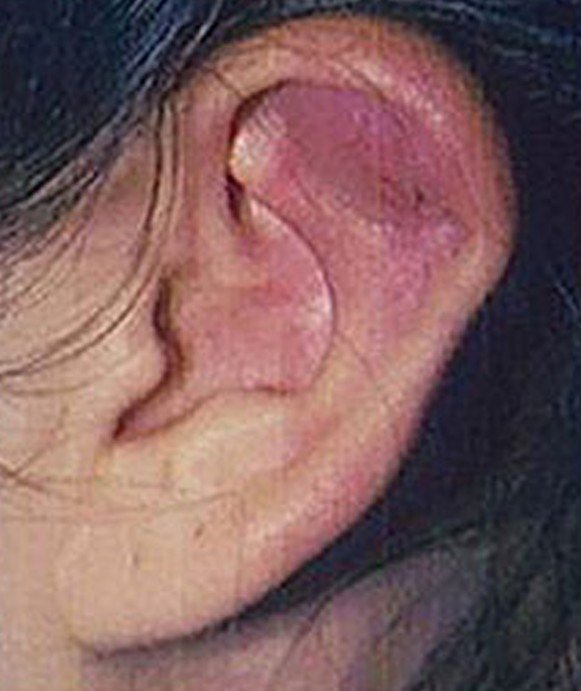Cartilage Piercing
Body piercing is one of oldest known forms of written art around the world. This condition occurs in different patterns and is often preventable and treatable.
What is Cartilage Piercing?
The term Cartilage Piercing, is made of tough elastic tissues located particularly in nose, neck, forehead as well as on the ear specifically just below on the rook of the ear that is highly susceptible to infections and bumps. A procedure which used to creates opening in the ear to insert jewelries such as rings, etc.
In addition, studies showed for about sixty-two (62) percent of individuals worldwide have done this procedure to express their personality as well as their individuality. Others used this as a sign of being cool and sexy without proper knowledge and information of the procedures that are being used that may lead to some severe infections if not treated immediately.
Systematically, cartilage piercing infection is caused primarily by pathogen named Staphylococcus Aureus and Pseudomnas Aeruginosa if not treated may lead to a permanent ear deformation and swelling.
- Ear lobe piercing
- Piercing of the helix
- Industrial Ear Piercing
- Conch Piercing
- Tragus Piercing
- Anti-tragus Piercing
- Rook Piercing
- Daith Piercing
- Dermal Punch Piercing
Symptoms
Piercing is known for its dangerous procedure. It has some common signs and symptoms. Listed below are the following:
- Minor Infection
- Allergic Reaction
- Earlobe tearing
- Keloids – A large darker color that surrounding your skin.
- Infection that carry bacteria to our body
- High Fever
- Nausea
- Pus
- Damage to underlying blood vessels or nerves
- Pain
- Bleeding
- Vomiting
- Stretching and associated problems
- Boils (bacterial pocket) and abscesses
- Scarring – Takes place due to the pressure exerted during the piercing period.
- Redness and red bumps
- Foul Odor
- Scars
- Over cleaning : the affected area will become weak and great possibility of infection may exist.
- Cartilage Irritation in the affected area
What is Cartilage Piercing Bump?
A procedure often appears to be gradually more rampant among adolescents and young adults if not quickly treated. It usually forms during the healing process of the cartilage piercing
The following are some of the common problems associated with piercing. Let’s mention a few:
- Hepatitis B or C
- Syphilis
- Sepsis (Blood Infection)
- Mental Hypersensitivity
- Overcleaning – The affected area may loss enough ability to fight and allows the infection to takes place.
- Boils and Abscesses
- Migration
Infected Cartilage Piercing
Studies showed that infections generally manifest within two (2) to five (5) weeks of piercing. Precise concern should be specified to minimize and avoid serious ear problems which can contribute to the deformation of the affected area of the ear.
There are numerous common causes for infected cartilage piercing including:
- Unspecialized equipment
- Frequent stirring the ear with unclean hands that cause infection to the lobes
- Wearing tight earrings – It reduces the blood flow to the ear lobes
- Repetitively rubbing the channel and causes an infection
- Improper ways of procedure
- Swimming in waters such as lakes, ponds that is polluted
Treatment
Piercing infection can appear or can take as mush as three (3) to twelve (12) months to completely heal the problem based on the type of procedure you undergo.
Here are some samples of treatments / remedies that you may apply for ear piercing infection. The following are as follows:
1. Changing the jewelry being used
2. Boost the intake of vitamin C foodstuffs in your diet,
- They greatly help to the fast healing of the affected area and promote wound healing
3. Use sea salt soaks
- Applied directly using cotton balls for about five (5) to ten (10) minutes and then rinse it thoroughly once or thrice a week.
- Helps in getting rid of the bumps that is present in the body.
4. Use Chamomile Tea
- Place the chamomile tea in a container filled with hot water and holds it for about a minute then place it to the affected area. Repeat the procedure one (10 to two (2) a day for best results.
5. Take certain medicines, such as aspirin
- Compress the aspirin tablet; add water until it becomes a paste. Do this at least three (3) to five (5) times a day. Apply this to the affected area.
- It helps in speeding up the healing process of cartilage piercing bump.
Surgery
Keloids – It shows due to excessive tissue repair and it can be treated only through surgery. The most severe form of cartilage piercing bump.
Healing Time
The healing time of cartilage pierce typically varies extensively according to the situation and severity of the condition.
Its curing process is subdivided into three stages:
- Inflammatory stage, wherein the wound is still open and flowing, irritation and gentleness are all to be anticipated;
- Growth or proliferative stage, wherein the body produces cells and protein to our body in order to heal the puncture and the edges contract around the piercing. This stage possibly last weeks, months, or longer than a year.
- Maturation or remodeling stage, it strengthens and stabilize the lining of the cells. This stage takes months or years to complete the healing process.
Cartilage Piercing Pictures
source : galloinstitute.org
source : tqn.com
source : piercing.maquestion.com
Leave a Reply
You must be logged in to post a comment.


